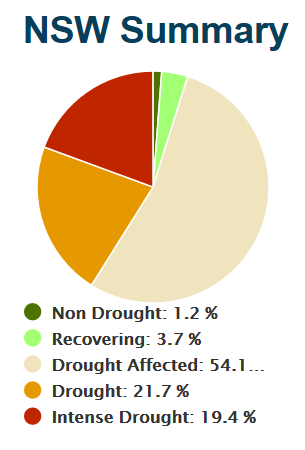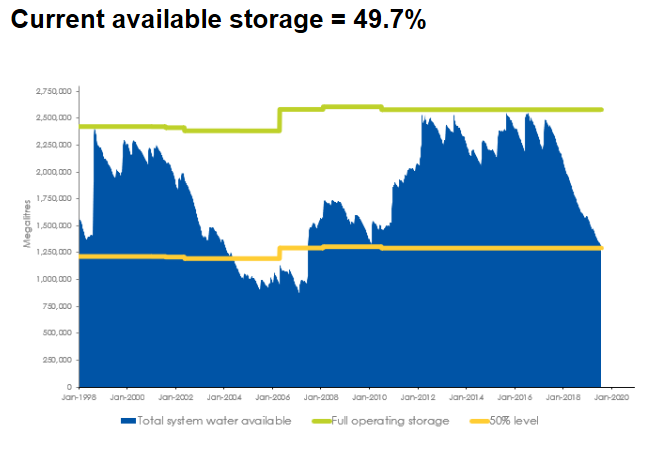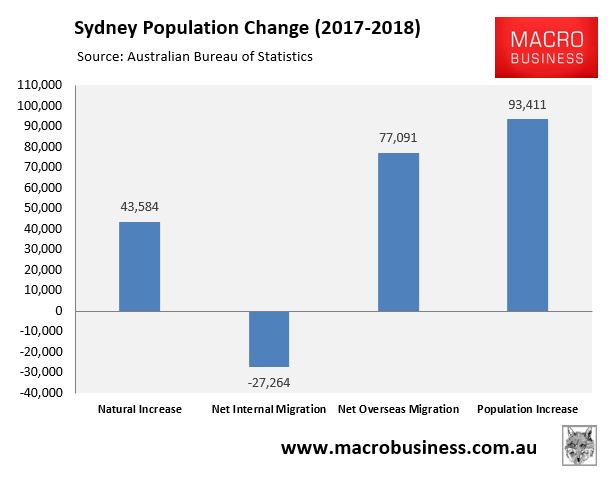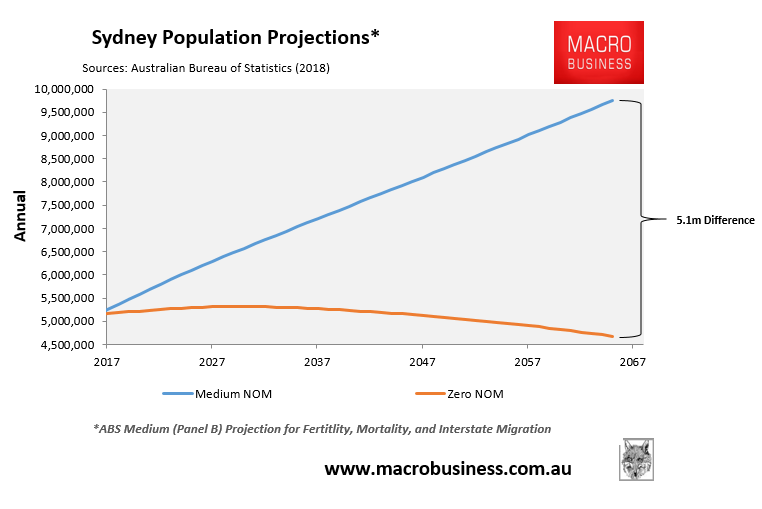The “worst drought on record” is ravaging New South Wales, which has led to more water restrictions being imposed across the state. On Friday, NSW Water Minister, Melinda Pavey, released the following statement:
“This drought is more severe than NSW has ever experienced. While autumn and winter are typically the highest rainfall seasons for the Lower Hunter, the rainfall has not eventuated, causing the region’s dams to fall to their lowest levels in more than two decades,” Mrs Pavey said.
“With no significant rainfall on the horizon, the introduction of Level 1 water restrictions forms an important part of Hunter Water’s drought response to help reduce demand on the water supply.
“The restrictions will focus on reducing outdoor water use, which accounts for about 20 per cent of the Lower Hunter’s total drinking water consumption.”
According to the Department of Primary Industries, 95.1% of New South Wales is suffering from drought:

Sydney’s water storages have also plunged below 50%:

And this has led to a panicked response from the State Government, which has promised to expand its expensive desalination plant:
The NSW Government has commenced further work to secure water for Greater Sydney with preliminary planning for the expansion of the Sydney Desalination Plant (SDP) commencing as Greater Sydney dam levels continue to drop at record pace.
Minister for Water, Property and Housing Melinda Pavey said all of NSW is experiencing the worst drought on record and Sydney’s Desalination Plant is playing a significant role in maintaining Sydney’s water supply.
“We are experiencing one of the worst droughts in living memory. Our State is under pressure, city and country,” Mrs Pavey said.
“Sydney storages have dropped from around 90 per cent to 50 per cent capacity in approximately two years”…
“The SDP reached full production at the end of July – two months ahead of schedule.
“The Plant is now producing an average of 250 million litres a day – approximately 15 per cent of Sydney’s supply.”
Mrs Pavey said since the Plant was turned on, the current dam depletion rates have improved by around 0.2 per cent per week.
Meanwhile, Sydney added 93,400 new water consumers last year, with mass immigration (77,100) driving the increase:

So how will Sydney maintain its water supply when the city’s population balloons by a projected 4.5 million people (86%) over the next 48 years, driven solely by immigration, at the same time as droughts become more common because of climate change?
Heck, Sydney’s West is projected to take an extra one million people alone over the next 20 years. Western Sydney is located far from the coast. Therefore, the cost of piping desalinated water uphill will necessarily be very expensive:
“Water being non-compressible and quite a heavy substance — it’s quite expensive to transport,” said Mr Lovell.
“Even if you’re looking at Sydney on the coast through to Penrith or from Wonthaggi to the north of Melbourne — you’re looking at 80 to 90 kilometres. That’s really expensive, and it’s a really inefficient way to transport water”…
Professor Khan said a whole new set of pipelines would need to be built to get desalinated water west of there, where the population growth will be.
“The further you (pump desalinated water) inland, the more you’re working in a direction that is opposite to the way our water supply systems are designed and operate,” he said.
“They pump water from the source — up in the reservoirs, up in the hills — to the coast. And it’s very difficult to actually turn that around.”
Clearly, the first best policy response to alleviating Australia’s water woes is to not run an immigration program that is triple the historical average. It’s so obvious, and yet totally ignored by policy makers, vested interests, and Australia’s mainstream media.


